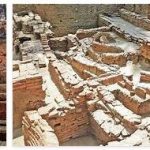Ladakh, located between the Himalayas and the Karakoram, is often referred to as Little Tibet or Indian Tibet. Although the highlands of Ladakh have something in common with Tibet, it is an independent area that has a lot of unique things to offer.
Breathtaking scenery
As a reward for climbing the high passes of Ladakh, the region offers an extremely contrasting landscape. Visitors can expect dry stone landscapes and steep mountains as well as, during the summer months, numerous green strips, flower meadows or terraces. Elevations over 6,000 meters are called “hills” and in between there are dark blue salt lakes and sandy deserts. On longer hikes, visitors have a good chance of encountering the wild animals resident in the region – such as antelopes, chamois, blue sheep, wild sheep or gazelles. Occasionally wolves and foxes also roam the landscape, but travelers need not be afraid of dangerous predators.
Hiking and trekking
According to topschoolsintheusa, Ladakh is particularly popular with sports enthusiasts as the area is ideal for hiking tours and trekking routes. The region is a paradise for mountaineers, but it should be noted that only mountains up to 6,000 meters high can be climbed without a permit. A fee has to be paid for higher mountains, which is often associated with bureaucratic hurdles. In addition, Ladakh has an incredible number of diverse trekking routes to offer, which are divided into five levels of difficulty – from easy to challenging. The trekking routes available for selection usually last several days and are often combined with visits to villages or monasteries.
Immersion in Buddhism
During a trip through Ladakh, a visit to the numerous Buddhist monasteries is a good idea. The three monasteries Alchi, Thikse and Hemis, which are very worth seeing and interesting, are mostly recommended. In addition, there are many other, sometimes large-scale and extensive, temple complexes and monasteries, as the residents hold many ceremonies and festivals in religious places. Culture, religion and tradition have a particularly high priority among the population of the Himalayan Kingdom.
A branching labyrinth of rivers, canals and lagoons invites you to go on wonderful boat tours in the Indian state of Kerala. 900 kilometers of navigable waterways can be traveled, for example, on traditional houseboats. We are talking about the so-called backwaters, the waters in the hinterland of the Malabar Coast on the Arabian Sea, also known as the Pepper Coast.
Fascinating insights into an exotic world
They stretch from the historic port city of Cochin in the north to Kollam in the south and from Alleppey in the west to Kottalam in the east, and it is not for nothing that they are a UNESCO World Heritage Site. The backwaters are a haven for thousands of waterfowl, but they are also the lifeline and source of food for the people who live here. On a special kind of study trip, the visitor immerses himself in another world: between rice fields, coconut and rubber plantations, children in school uniforms are transported to school by canoe and friendly smiling people, who balance water troughs on their heads, walk slowly on their way.
Kettuvalloms – the traditional houseboats
Originally they were intended for the transport of goods, today many of the traditional (built without any nail) houseboats are equipped for tourists and serve as a floating home during a multi-day trip through the backwaters. If you like, you can be pampered by the chef with fresh exotic delicacies on the way.
Geographical facts
A total of 44 rivers and 29 larger bodies of water (lakes and lagoons) together form the backwaters. The Vembanad Lake is the largest of them with a length of 83 kilometers and is open to the Arabian Sea.
As an ecosystem, the backwaters are increasingly shaped by humans, which brings a variety of problems with it. As a natural paradise, they are unique in the world, irreplaceable and accordingly worthy of protection.
Desert city of Jaisalmer
The city of Jaisalmer is only about 80 kilometers from the border with Pakistan in the west of the Indian state of Rajasthan. Founded in 1156, the place has long been considered the crossroads of camel caravans and trade routes that connected India with Central Asia. Surrounded by the Thar Desert, which consists of sand dunes, hills and gravel plains, and in the vicinity of the Desert National Park located in it, Jaisalmer, with its around 65,000 inhabitants, is primarily important for tourist trips and study trips today.
A unique building ensemble
Temples and the pagoda-like Tazia tower are grouped around the fort and form one of the most beautiful desert cities in the world. Especially when the evening sun conjures up magical lighting in the narrow streets, the visitor feels like in a fairy tale picture from 1001 Nights.
The area around Jaisalmer
A little outside in the north of the city is the remarkable cemetery of the wives of Jaisalmer who died by burning. At the southern end of the city, Gadisar Lake, surrounded by smaller temples and shrines, invites you to take a leisurely boat trip. Finally, the camel safaris, which are offered for a few hours as well as for several days, including outdoor meals, are among the highlights of a visit to the desert city of Jaisalmer.




